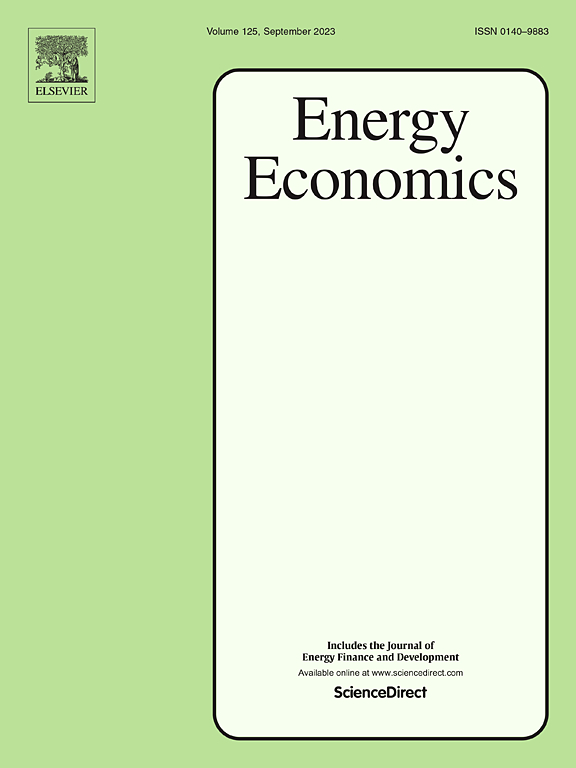2030年后,中国的人工智能碳足迹将翻一番
IF 14.2
2区 经济学
Q1 ECONOMICS
引用次数: 0
摘要
人工智能(AI)的空前进步大大增加了能源消耗,引起了全球对人工智能碳足迹的担忧。作为全球人工智能的领导者,中国正处于人工智能发展与国家能源转型和气候战略,特别是碳峰值和碳中和目标交叉的关键时刻。本研究采用基于不确定性的建筑碳建模工具和情景分析,量化了2022年至2050年中国人工智能数据中心的能源消耗和碳足迹。我们的预测表明,到2030年,人工智能数据中心的用电量将超过1000太瓦时,给电力系统带来压力,并推动排放量大幅增加。碳足迹预计将在2030年后翻一番,2038年达到峰值695亿吨,到2050年下降到474亿吨,其中制造业排放量约占总量的18%。地理空间分析表明,在“一切照旧”情景下,能源需求仍然集中在东部省份,而“先进绿色”情景将人工智能计算需求重新分配到西部省份,创造了新的碳热点。增加内部绿色电力的比例被认为是最有效的战略,有可能减少42%的运营排放。本研究全面考察了人工智能对能源的影响,并为平衡技术进步与长期能源可持续性提供了与政策相关的见解。本文章由计算机程序翻译,如有差异,请以英文原文为准。
AI carbon footprint in China sets to double post-2030 carbon peaking
The unprecedented advancements in artificial intelligence (AI) have significantly increased energy consumption, raising global concerns about AI carbon footprint. As a global AI leader, China stands at a crucial juncture where its AI development intersects with national energy transition and climate strategies, particularly concerning its Carbon Peaking and Carbon Neutrality Goals. This study employs an uncertainty-based Architectural Carbon Modeling Tool and scenario analysis to quantify the energy consumption and carbon footprint of AI data centers in China from 2022 to 2050. Our projections indicate that the electricity consumption of AI data centers will surpass 1000 TWh by 2030, exerting pressure on the power system and driving a significant increase in emissions. The carbon footprint is projected to double after 2030, peaking at 695 Mt. in 2038 and declining to 474 Mt. by 2050, with manufacturing emissions contributing approximately 18 % of the total. Geospatial analysis reveals that under the Business as Usual scenario, energy demand remains concentrated in the eastern provinces, whereas the Advanced Green scenario redistributes AI computing demand to the west, creating new carbon hotspots. Increasing the proportion of internal green electricity is identified as the most effective strategy, with the potential to reduce operational emissions by 42 %. This study comprehensively examines AI's energy implications and provides policy-relevant insights for balancing technological advancements with long-term energy sustainability.
求助全文
通过发布文献求助,成功后即可免费获取论文全文。
去求助
来源期刊

Energy Economics
ECONOMICS-
CiteScore
18.60
自引率
12.50%
发文量
524
期刊介绍:
Energy Economics is a field journal that focuses on energy economics and energy finance. It covers various themes including the exploitation, conversion, and use of energy, markets for energy commodities and derivatives, regulation and taxation, forecasting, environment and climate, international trade, development, and monetary policy. The journal welcomes contributions that utilize diverse methods such as experiments, surveys, econometrics, decomposition, simulation models, equilibrium models, optimization models, and analytical models. It publishes a combination of papers employing different methods to explore a wide range of topics. The journal's replication policy encourages the submission of replication studies, wherein researchers reproduce and extend the key results of original studies while explaining any differences. Energy Economics is indexed and abstracted in several databases including Environmental Abstracts, Fuel and Energy Abstracts, Social Sciences Citation Index, GEOBASE, Social & Behavioral Sciences, Journal of Economic Literature, INSPEC, and more.
 求助内容:
求助内容: 应助结果提醒方式:
应助结果提醒方式:


